At CES 2023, numerous new (gaming) screens were presented in addition to the GeForce RTX 4070 Ti (test), Ryzen 7000X3D and Ryzen 7000 without X (test). And for the first time, OLED panels are also widely represented. Reason for an upgrade? Or are you currently satisfied with your screen? And what kind is it?
Table of Contents
- Lots of OLED screens at CES
- Until now, OLED was the exception on the PC
- What is your screen like at home?
- How many pixels do you use?< /li>
- How is your screen set up? And does HDR matter?
- The PC screen of your dreams
- Participation is expressly desired
- The last ten Sunday questions in the overview
Lots of OLED screens at CES
When it came to the screens, one display type in particular dominated the reporting at CES 2023: OLED panels have finally arrived on PC screens, after the self-illuminating pixels had been used on small smartphone screens and large televisions for years for better contrasts and in the provide superior image quality in most cases – and increasingly so in the middle class or even in entry-level devices.
Until now, OLED was the exception on the PC
For PC screens, however, OLED panels have so far been the exception. On the one hand, there were a few professional models that were primarily aimed at creative users and were associated with a maximum refresh rate of 60 Hertz. And on the other hand, in recent years, some users have opted for comparatively small TV models with a screen diagonal of 48 inches or, most recently, 42 inches.
For example, ComputerBase tested the LG OLED 48CX two and a half years ago – and the television was technically quite appealing: OLED panels are suitable for games anyway due to their low input lag, and LG was also one of the first manufacturers to equip their own smaller UHD televisions with a native refresh rate of 120 Hertz, the necessary HDMI 2.1 sockets and even G-Sync – not only for game consoles a huge leap in image quality and gaming experience was revealed a few years ago, but also on the PC, provided users with the sheer proportions of a television on a desk.
Dedicated gaming PC screens, on the other hand, were still a long time coming. In March 2022, the editors tested the Alienware AW3423DW, which delivered excellent image quality with a curved 175 Hertz QD OLED panel, but was not entirely convincing at the price of 1,300 euros: A permanently active fan and color fringes clouded it Impression. The Corsair Xeneon Flex 45WQHD240 was then presented at Gamescom, whose UWQHD OLED panel works at 240 Hertz and can be bent manually. It's an almost perfect gaming screen. The catch: 2,400 euros on the price tag.
-
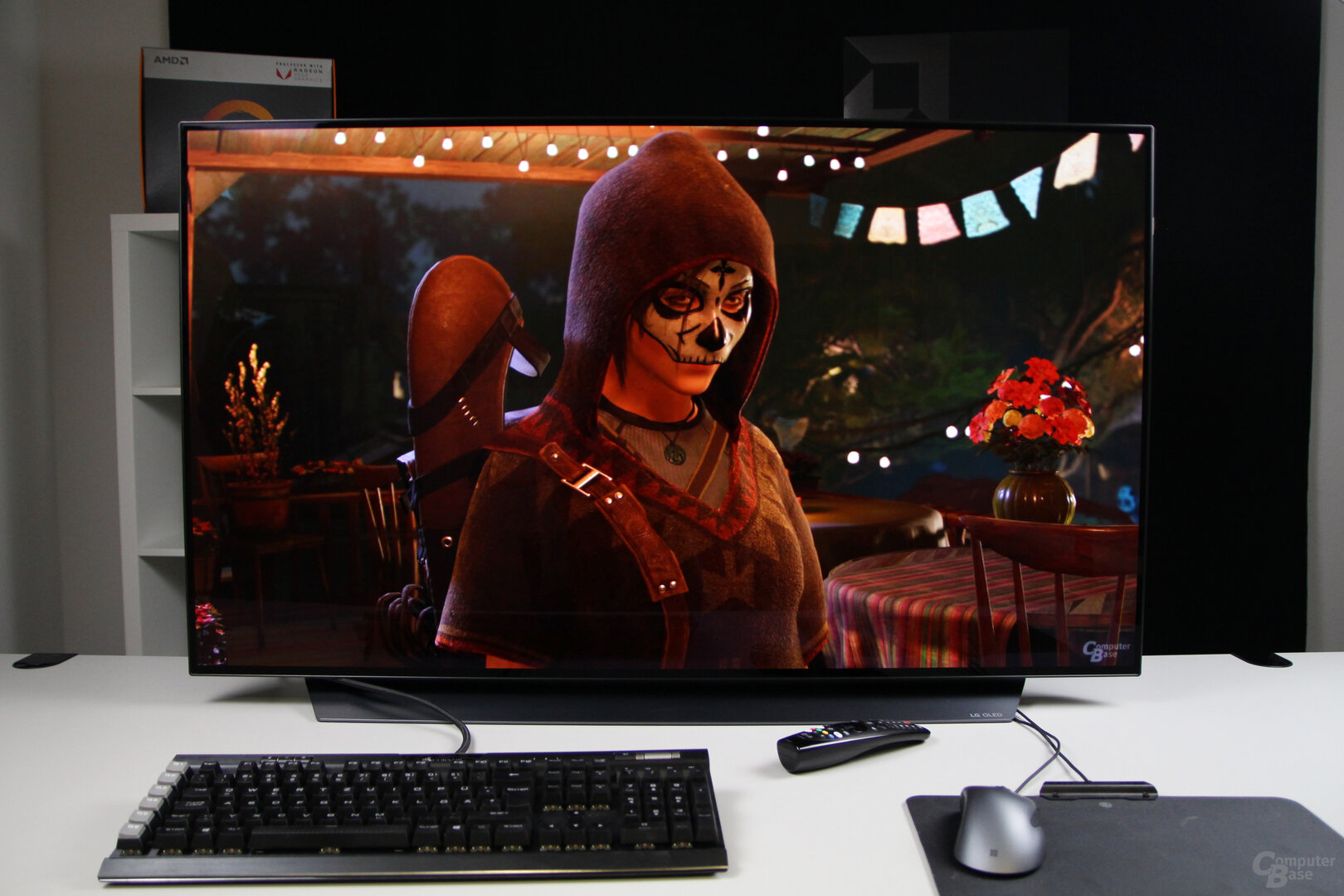 LG OLED 48CX
LG OLED 48CX
< /ol> Image 1 of 6
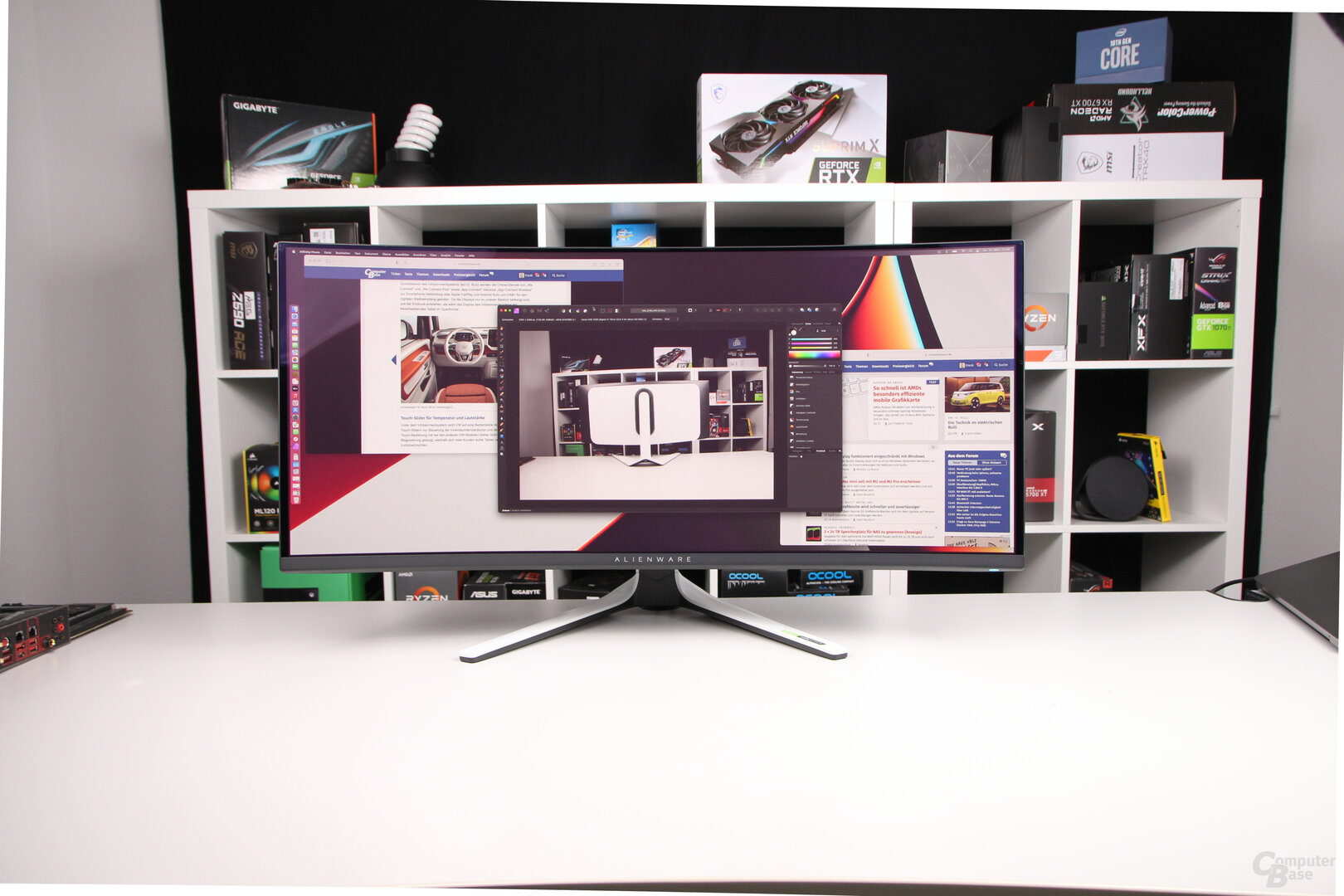 Alienware AW3423DW Review
Alienware AW3423DW Review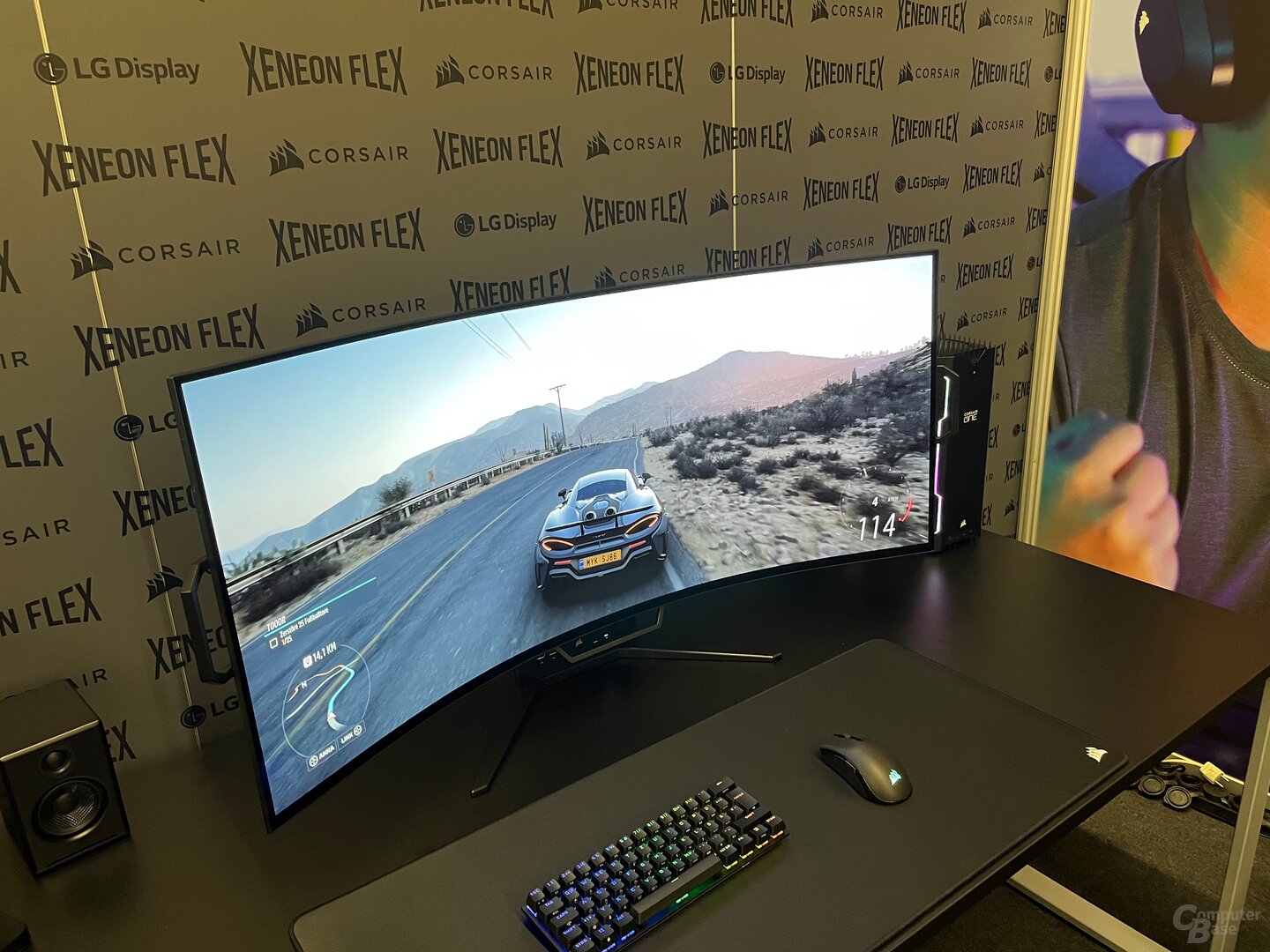 Corsair Xeneon Flex 45WQHD240
Corsair Xeneon Flex 45WQHD240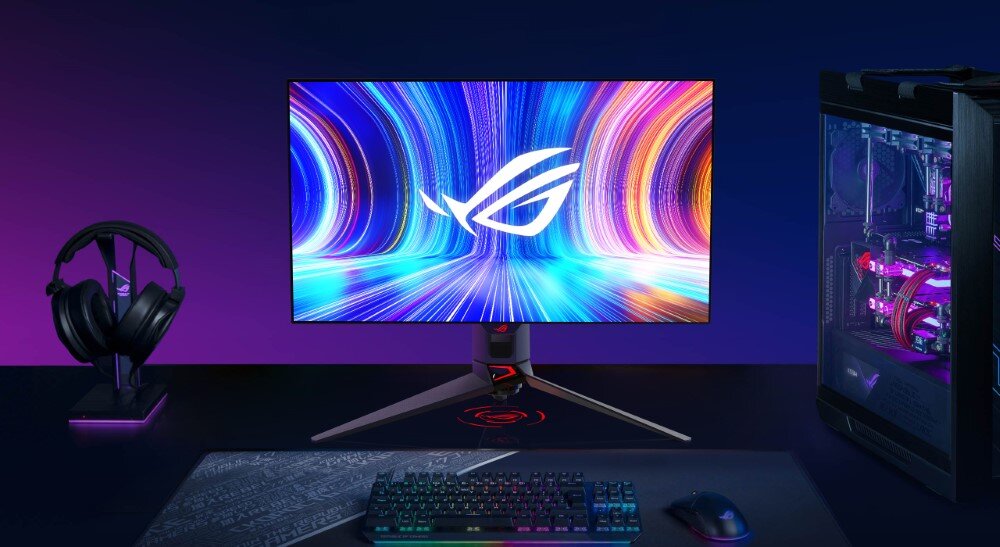 Asus ROG Swift OLED PG27AQDM (Image: Asus)
Asus ROG Swift OLED PG27AQDM (Image: Asus)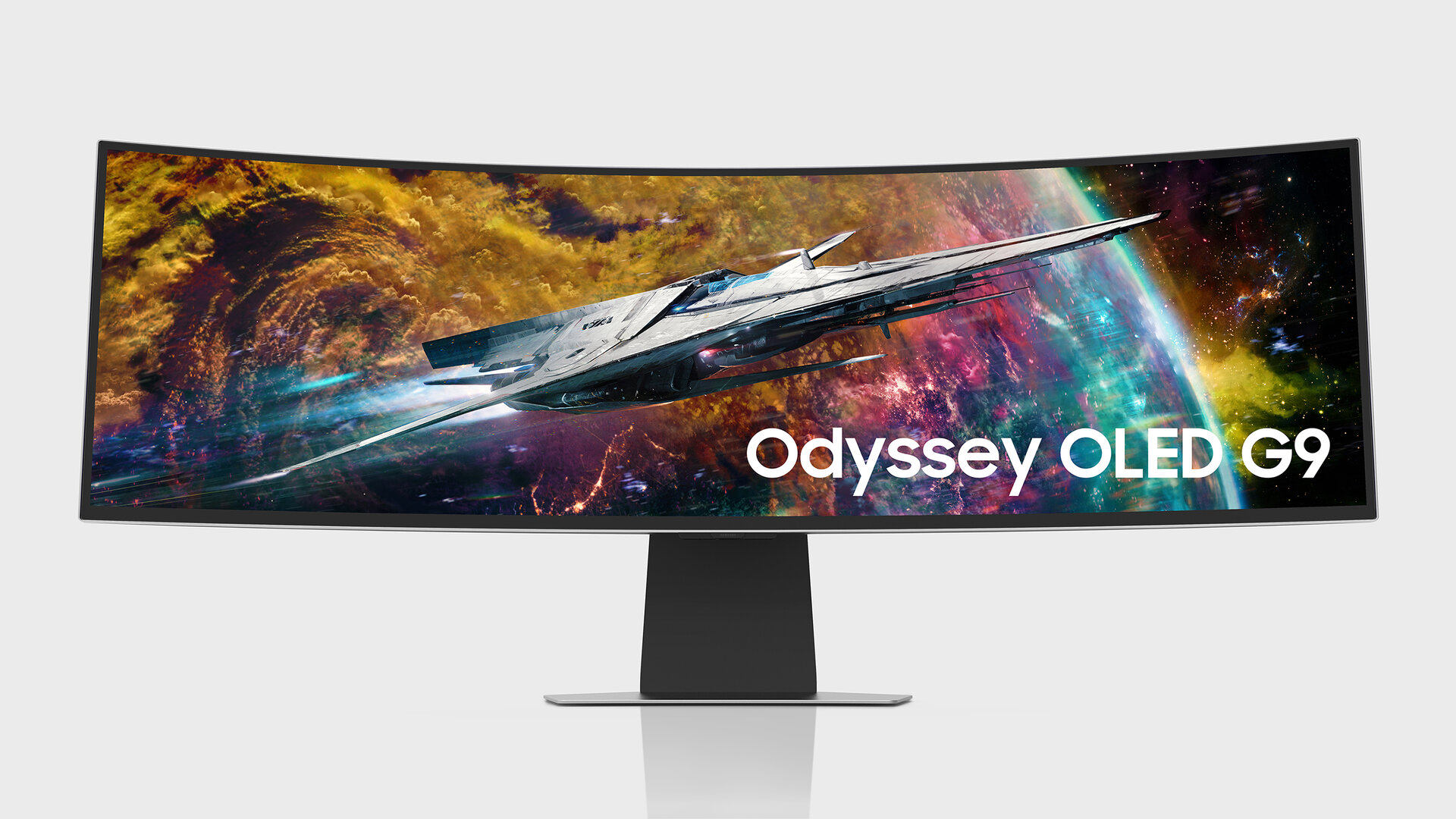 Samsung Odyssey OLED G9 G95SC (Image: Samsung)
Samsung Odyssey OLED G9 G95SC (Image: Samsung)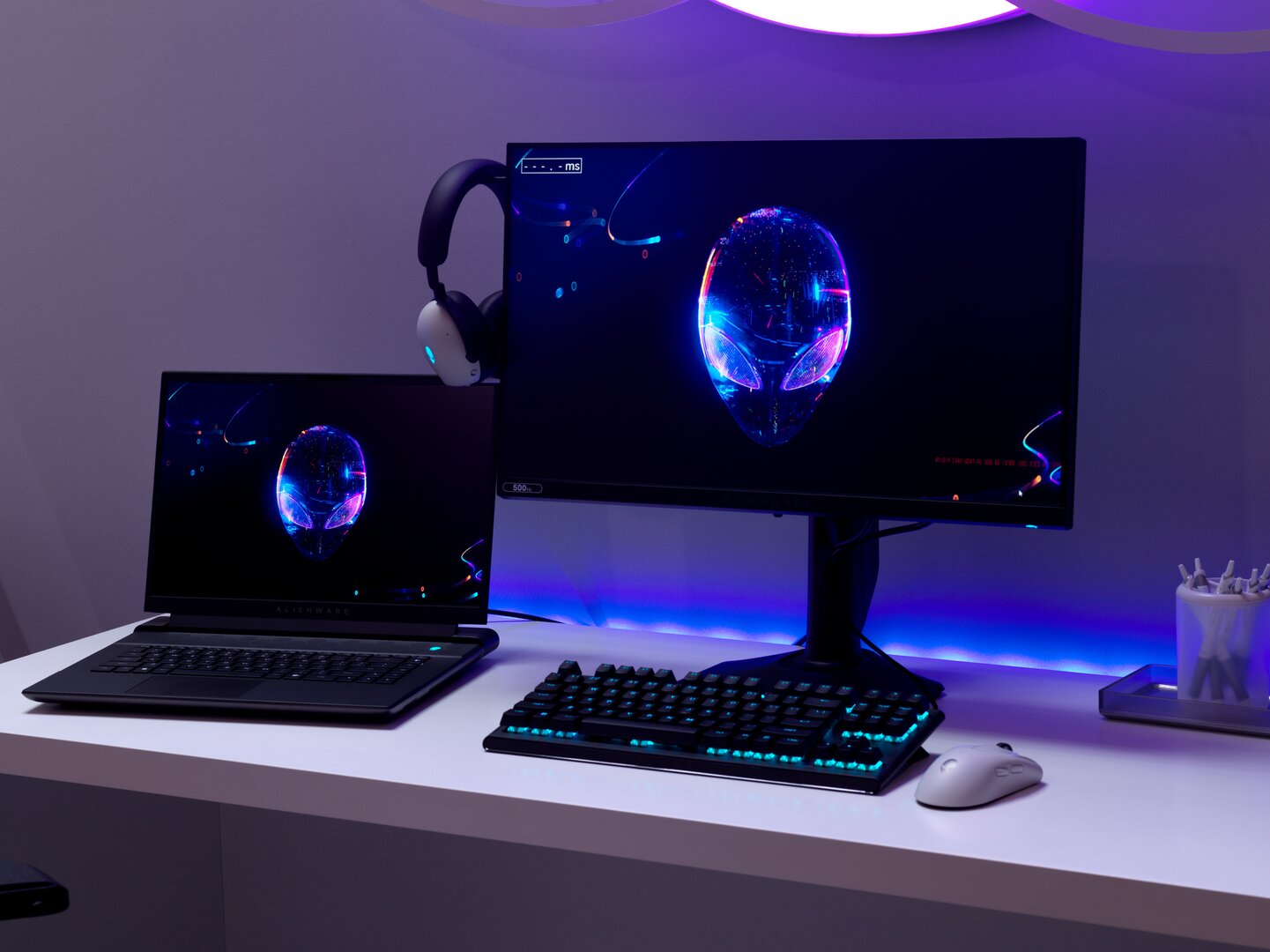 Alienware AW2524H (Image: Alienware)
Alienware AW2524H (Image: Alienware)At CES 2023, however, it finally became clear that the few OLED screens in 2022 were only a foretaste. Numerous monitor manufacturers presented gaming screens with OLED panels in Las Vegas, including Acer, Asus, Asus ROG, Samsung and ViewSonic. 27-inch WQHD screens with a refresh rate of 240 Hertz were frequently represented. The Samsung Odyssey OLED G9, on the other hand, offers this twice. And there were other curved UWQHD models.
But there were also innovations apart from OLED technology. For example the Samsung Odyssey Neo G9 with an IPS panel with 7,680 × 2,160 pixels at a variable refresh rate of up to 240 Hertz. Or the first e-sports displays with refresh rates beyond 500 Hertz, albeit with only 1,920 × 1,080 pixels. And there was also the Dell UltraSharp 43 with four Full HD. In short: A lot has happened in the first week of the year when it comes to PC screens. So it's not surprising that at least 17 percent of community members voted for “the new gaming monitors with OLED panels and high refresh rates” in last Sunday's question about the personal highlights of CES – and the competition in that survey was AMD Ryzen 9 7950X3D, Ryzen 9 7900X3D and Ryzen 7 7800X3D should not be underestimated.
What does your screen situation look like at home?
The editors take this as an opportunity to ask about your PC screens and corresponding preferences – again – in the third Sunday question of the year. Again, because the topic was already the subject of a previous Sunday question and some related questions are also part of the large community survey on hardware and software, which traditionally takes place at the end of the year on ComputerBase and runs until January 26th. But this time there are some new questions – I promise!
But first, let's ask about the panel that's built into your primary PC screen. In the summer of 2022, IPS dominated here with almost 60 percent, while OLED only came in at 7.5 percent. Has anything changed there yet?
Which panel is installed in your primary screen?
- TN panel
- VA/PVA/MVA panel
- IPS panel
- OLED panel
- Abstain ( Show result)
Please log in to vote!
And of course the question of the size of the primary monitor should not be left out. If you have a screen whose diagonal is not exactly given by the following answer options, please select the option that comes closest.
How big is your primary screen?
- Around 21 inches or smaller
- Around 24 inches
- Around 27 inches
- Around 32 inches
- Around 38 inches
- Around 42 inches
- Around 48 inches or larger
- Abstention (show result)
Please log in to vote!
Most recently, around 40 percent of readers stated that they were using a 27-inch diagonal model as the primary screen. However, almost 7 percent of the participants used a 48-inch television.
How many pixels do you record?
The following is now about how many pixels are pushed back and forth with you per second. The resolution of your primary screen and the total number of monitors connected to the PC were only collected in the aforementioned community survey – the corresponding surveys are embedded again here for the sake of completeness.
Surveys on resolution and number of screens What is the resolution of your primary screen?
- 1280×720 – 0.6%, 0.3%, 0.2%, 0.2%, 0.1%
- 1920×1080 – 49.7%, 42.7%, 35.8%, 27.4%, 20.7%
- 1,920 x 1,200 – /, /, /, /, 3.3%
- 2560×1080 – 3.1%, 3.0%, 3.0%, 2.8%, 1.9%
- 2560 x 1440 – 23.4%, 28.7%, 34.7%, 38.1%, 40.5%
- 3440 x 1440 – /, /, /, 11.0%, 13.3%
- 3840×2160 – 9.4%, 10.9%, 12.8%, 13.7% , 14.8%
- 5,120 x 1,440 – /, /, /, /, 2.4%
- A other – 13.8%, 13.4%, 13.5%, 6.8%, 3.1%
- Abstain (Show result)
Please log in to vote! How many screens do you use on the PC?
- One – 57.0%, 58.3%, 56.8%, 54.1%, 51.7%
- Two – 35.1%, 34.9%, 35.6%, 37.9%, 38.8%
- More than two – 7.8%, 6.8%, 7.6%, 8.0%, 9.5%
- Abstain ( Show result)
Please log in to vote!
The next question is new: How many pixels do all the monitors that are permanently connected to your primary PC have together? For orientation: A Full HD screen with 1,920 × 1,080 pixels has almost 2.1 million pixels, a WQHD panel with 2,560 × 1,440 pixels has almost 3.7 million pixels and a UHD screen with 3,840 × 2,160 pixels even to around 8.3 million pixels.
How many pixels are all the screens connected to your PC combined?
- Less than 2 million
- 2-4 million
- 4-8 million
- 8-12 million
- 12-16 million
- 20-24 million
- More than 24 million < /li>
- Abstain (Show result)
< li class="poll__form-li"> 16-20 million
Please log in to vote!
If you are not afraid of another arithmetic task, you are now invited to use the refresh rates of the screens used to actually calculate how many pixels per second your own graphics card or iGPU has to calculate (in theory) and share the result in the comments. If that's too much work for you, you should again refer to the surveys on the refresh rate of the primary screen and whether it is equipped with an adaptive refresh rate such as Adaptive-Sync, G-Sync or FreeSync, which were also part of the community survey.
Refresh Rate and Adaptive Frequency Surveys How many Hertz is your primary display?
- 60 hertz – /, /, /, 35.7%, 30.1%
- 75 hertz – /, /, /, 8.6%, 7.2%
- 100 hertz – /, /, /, 4.8%, 4.3%
- 120 hertz – /, /, /, 5.5%, 6.3%
- 144 hertz – /, /, /, 35.3%, 35.9%
- 165 hertz –/, /, /, 7.6%, 12.4%
- 240 hertz – /, /, /, 1.9%, 3.3%
- 360 Hertz – /, /, /, 0.1%, 0.1%
- Another frequency – /, /, /, 0.6%, 0.4%
- Abstention (show result)
Please log in to vote! Does your display offer an adaptive refresh rate?
- Nvidia G-Sync – 11.7%, 14.4%, 17.8%, 20.8%, 25.6% < /li>
- AMD FreeSync – 16.4%, 23.4%, 33.1%, 43.8%, 46.4%
- Neither – 71.9%, 62.2%, 49.1%, 35.4%, 28.0%
- Abstention (show result)
Please log in to vote!
How is your screen set up? And does HDR matter?
Going in a different direction is how you set up your primary screen. With the included stand on the table? Or is that too low for you and you have found a suitable coaster? Another elegant solution is mounting using a VESA mount, for example on a rigid monitor frame, a flexible and swiveling arm or the wall behind the desk.
How is your primary screen set up?
- My screen is on its stand.
- My screen is standing on its stand and underneath are books, a wooden frame or something similar.
- My screen is attached to an aftermarket static monitor mount.
- My screen is attached to an aftermarket movable monitor arm.
- My monitor is wall mounted.
- Abstain (Show result)
Please log in to vote!
Also new is the question of whether you use HDR content on the PC. More and more screens are specified according to corresponding standards, for example VESA DisplayHDR 400, 600 and 1000 as well as HDR10 are common.
Do you use HDR on your primary screen?
- Yes, always.
- Yes, sometimes.
- No, although my display supports HDR.
- No, my display does not support HDR.
- Abstention (show result)
Please log in to vote!
The computer screen of your dreams
And finally, back to the numerous innovations at CES 2023: is the PC screen of your dreams included this time? Has it been there for a long time? Or is there still not “the display that everyone wants”, as Jan suspects in the second episode of the CB radio podcast? Experience has shown that OLED screens with a resolution of 2,560 × 1,440 or 3,440 × 1,440 pixels, a refresh rate of 240 Hertz and adaptive synchronization should at least come very close to the perfect display for many gamers.
Does the screen of your dreams exist?
- Yes, there is: It's right here in front of me.
- Yes, there is now and I'm considering buying it.
- Yes, there is, but it's way too expensive for me personally.
- No, not yet.
- Abstain (Show result)
Please log in to vote!
And it doesn't matter whether the screen of your dreams already exists or not: what makes it special for you personally? The editors look forward to corresponding explanations in the comments. And finally, in this context, the following question should be asked: Are you satisfied with your screen setup? Or do you see room for improvement?
Are you satisfied with your screen setup on the PC?
- Yes, I am satisfied.
- No, I am dissatisfied.
- Abstain (show result)
Please log in to vote!
Participation is expressly desired
As always, the editors look forward to well-founded and detailed justifications for yours Decisions in the comments on the current Sunday question. If you have completely different views that are not covered by the polls in the article, please post them in the comments. Ideas and suggestions for additions to the content of the current or future surveys are also welcome.
Readers who have not yet taken part in the past Sunday questions are welcome to do so – the surveys always run for a period of 30 days and the only requirement for participation is a free ComputerBase account . In particular, there are still exciting discussions going on in the ComputerBase forum about the last Sunday questions.
An overview of the last ten Sunday questions
- The CES 2023 in retrospect: What are your highlights and lowlights from Las Vegas?
- Luxury gaming PC: Is a high-end computer still acceptable in 2023?
- Christmas question: What technology do you have (in your dreams) under the tree?
- Nvidia vs AMD: How do you feel about the launch of GeForce RTX 4000 and Radeon RX 7000?
- Upstream, Downstream, Ping: How good is your internet connection at home?
- Are you still using SMS? And if so, how?
- How, when and where do you buy new games?
- What does the community think about ray tracing in games?
- Graphics settings, presets, Image output and peripherals
- Are you still relying on air or already on water?
This article was interesting, helpful or both ? The editors are happy about any support from ComputerBase Pro and disabled ad blockers. More about ads on ComputerBase.